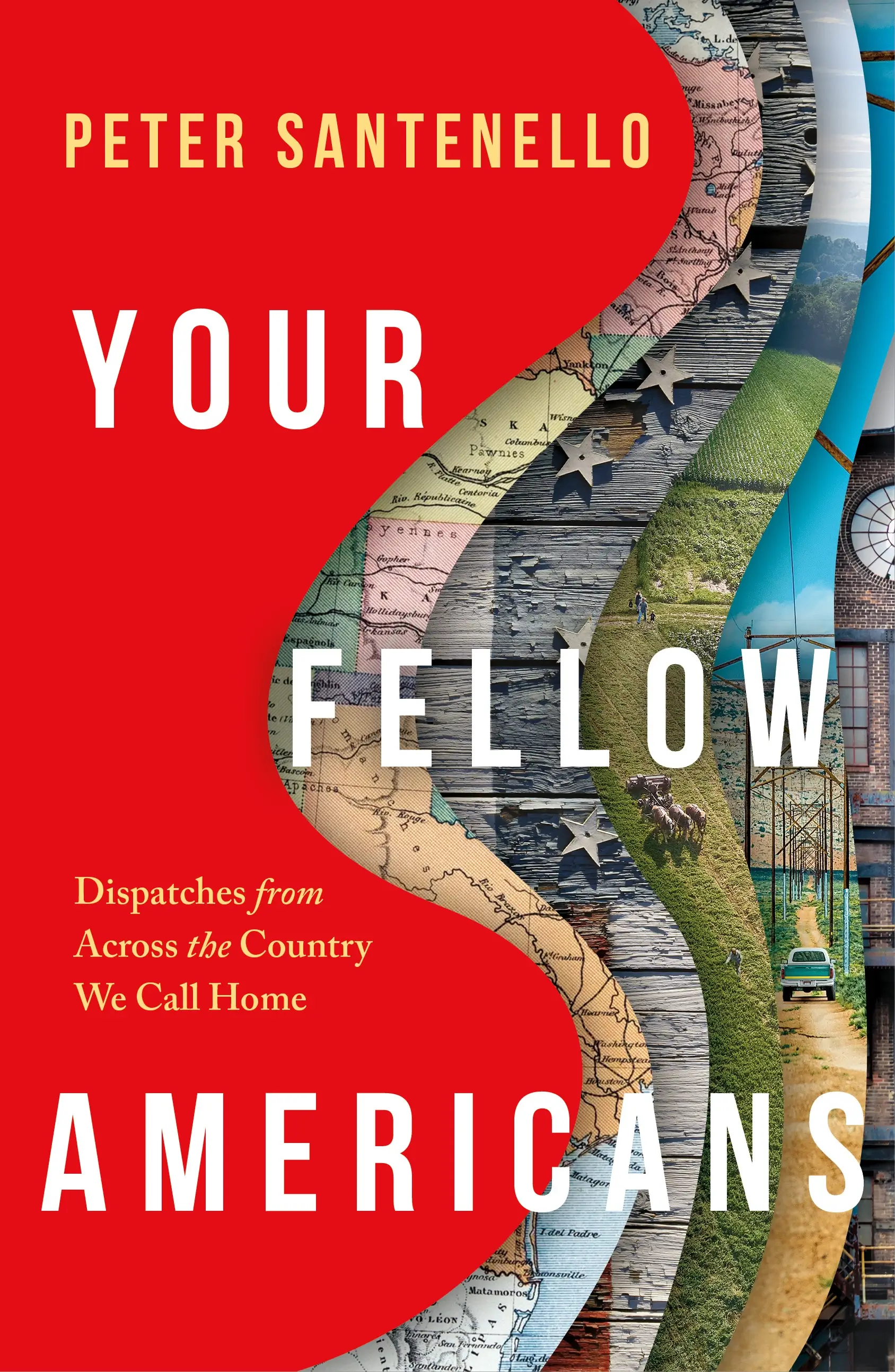
Deep in the Ukrainian countryside, down a long, straight road in the forest, lays the dark story of a horrific accident that shook the world. Everybody’s heard of it, but after reactor number 4 exploded, the people of Pripyat pushed baby strollers around like it was any other peaceful sunny day. Babies cried, lovers married, and children laughed, all without knowing radiation fumed into the air and seeped into their DNA.
Today the area is known as the Chernobyl Exclusion Zone—a 30km2 radius that extends outward from the Chernobyl nuclear reactors. Inside the zone is an odd collection of bizarre realities, tightly laced with dark stories, and wrapped up in the surreal.
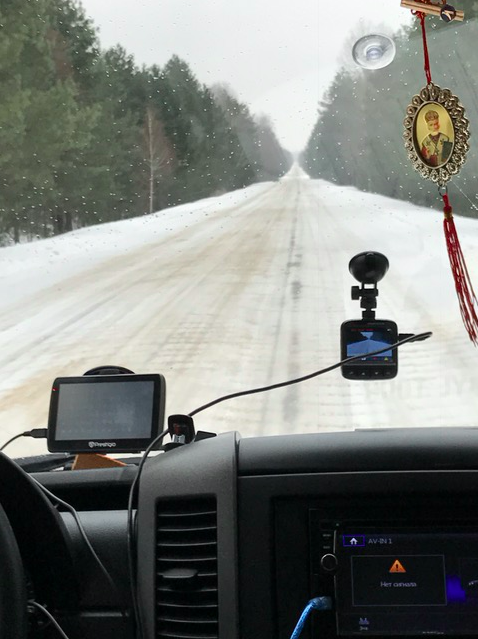
Roughly 83 miles north of Kyiv
Moving from the U.S. to Ukraine has revealed many of life’s mysteries and juxtapositions. If copious amounts of alcohol and distractions are removed, one is forced to stop more, to think more, to question more, to go deeper into oneself.
People often go to places like Bali, or spiritually uplifting retreats in the Himalayas to find a richer understanding of what life is all about. For me, this place is Ukraine. Because if the goal is to look inward, I feel it’s more effective to remove the pristine external surroundings of a turquoise ocean, or the inspiration of an awe-inspired glacier.
Despite the many special aspects of Ukraine, there are times—like in the winter—when the country doesn’t rock the cradle for you or hold your hand. Instead, sometimes, it hits you square in the face. The blow might come from a rogue group of dogs hunting you in a snowy urban forest, or from the fumes of cheap and unregulated gasoline that fires from exhaust pipes into your lungs, or from an arctic blast of air that puts even your eyebrows on edge. Or from a visit to Chernobyl….
This hit is the antithesis of comfort… it wakes you up from your illusions, heightens your senses, and demands your full attention. Call it whatever you want, but there’s no denying that the Ukrainian winter makes things more real.
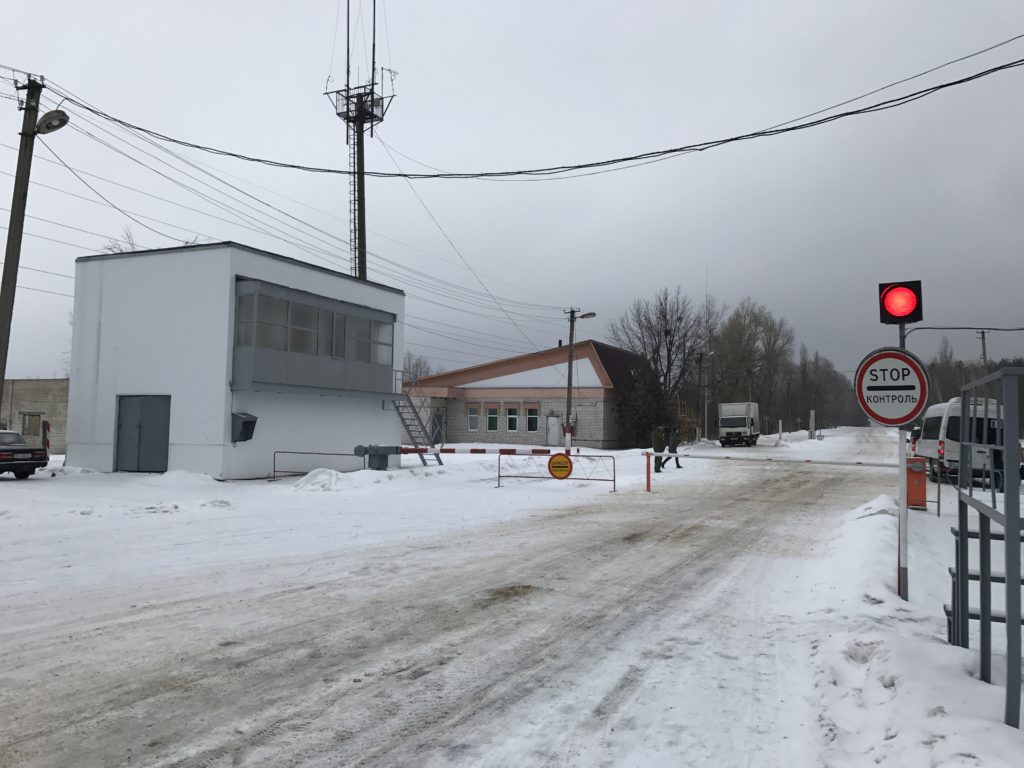
First checkpoint to the Chernobyl exclusion zone
Enter Chernobyl….
Pripyat was the model utopic Soviet City. It had everything—even its own boxing ring. Roughly 47,500 people lived there. It housed nightclubs, swimming pools, a movie theater, and a soccer stadium. It hosted one of the four modern supermarkets in the Soviet Union (two others were in Moscow, and another in Kyiv). It had restaurants, boats on the water, and everything else to make a society happy and distracted. The former city actually looked very cool—almost like a summer camp where all the activities were carefully curated, and recreation was the focal point of life.
While the British hold the title “the sun never set on the British Empire,” the Soviet Union was comprised of a landmass that spanned across 11 time zones. The sun never actually set on it because it rose in one part of the country while setting on the other side simultaneously.
Those “fortunate” enough to win the opportunity to live in Pripyat uprooted their lives, from far and wide across the Soviet Union, to live the dream.

But utopia had a dark side to it. And while everything appeared buttoned down, it wasn’t. Things are not always what they seem to be. This is a common and deeply rooted theme, both in Ukraine and life in general. What is here today might be gone tomorrow. And if something is too good to be true, it probably is.
The day after reactor number 4 caught fire, radioactive air spewed into the sky, and Soviet authorities brought in over 1,000 buses to Pripyat. People were evacuated one by one, never to return.
I stood frozen on the side of the road in the abandoned city where nature crept past the curb to take back the street. A cold wind swept over my face, and a powerful symbol of the Union—the hammer and sickle—hung high overhead on top of a monolithic “block.” It was a typical Ukrainian winter day, saturated in grayness—so gray the sky looked to be fusing into the apartment buildings.
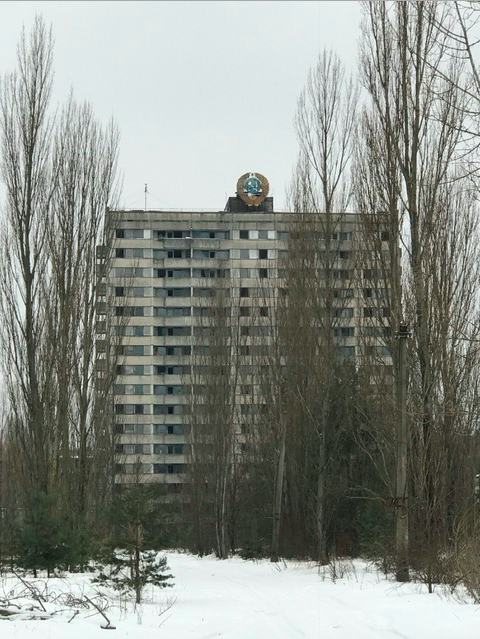
Ghost city Pripyat. Nature taking over. Hamer and sickle on top of a “block.”
It took one of man’s greatest feats—creating nuclear energy—for there to be a reason to populate this utopic city. And it took a most horrific man-made disaster to evacuate it and bring it back to nature. Wolves, deer, and foxes now roam where bicycles, cars, and humans dominated the land only years ago. Tree roots poke through tired concrete, and gravity pulls rust back into the earth from the overturned grocery carts in the remnants of the supermarket.
Streetlight poles that were thicker than trees a few years ago are now slightly thinner. In a few years the trees will shroud the street lights completely to erase them from sight for good.
While we all know, everything that goes up must come down, Pripyat is an accelerated example of this process. It’s almost like it happens in real time before your eyes. There is something eerie about this; something that the mind has never processed before.

The sarcophagus over reactor 4 in the background.
Looking out from the top of an apartment block, the massive lump of the reactor number 4 sarcophagus rises out of the flat landscape in the distance—the ominous structure responsible for all the joy and sadness here. Pripyat and its people paid the ultimate price for nuclear energy gone wrong.
Lessons learned? Don’t live near a nuclear power plant (if there’s a choice). Be cautious of authorities and what is deemed as safe. Hanging fruit is often too good to be true. Life, no matter how certain, can flip in a second. Change is inevitable. Nature always wins in the end.
Out at Reactor Number 4….
Evidence of the Chernobyl disaster was first detected two days after the explosion and 1,100 kilometers away when Swedish workers discovered traces of radioactive particles on their uniforms. Unusually high levels of radioactivity were found in Canada days later. These discoveries ultimately forced the Soviet Union to admit the disaster to the world.

Firefighter memorial
The true heroes of the Soviet Union—and the world—were the first firefighters that knowingly ran into lethal dosages of radiation. Many died just days after, but if it wasn’t for their sacrifices; the fire would have spread to reactor three and beyond. One could argue that these Soviet firefighters saved the lives of thousands, if not hundreds of thousands of people across the globe.
The firefighters spoke of the harsh taste of metal in their mouths and tingling skin. The very moment the firefighters acted upon saving thousands of people, was the very moment they started to die.

Reactor 4 sarcophagus
Today, the area around the reactors is a bizarre environment. No energy has been produced here since 2000, but the zone is buzzing with activity like something industrious is happening. And it is, but the activity is inverse to every other construction site I’ve seen on this planet; the development is all about closing something down instead of starting it up. And a ton of money is being thrown at it.
The Chernobyl Shelter Fund has received over 1.6 billion dollars so far from 45 countries to achieve the goal of fully decommissioning the reactors by 2064. This work is necessary, and contractors with their crews are setting up for the long, long haul. I didn’t feel a hustle in the air to get this project finished up anytime soon.
Other signs of development are found not far from the reactors, like the renovation on the outside of a massive cafeteria to feed workers for almost the next half of a century. There is a full community living and thriving in the Chernobyl Exclusion Zone, and all of these services need economic oxygen to survive.

Remanence of one of the best supermarkets in Soviet Times
Government and private contractors are both creating an invaluable service, but money is likely being siphoned away in copious amounts. It always seems that money comes in more liberally and in larger dominations when the nouns “nuclear” or “terrorism” are involved. I’m sure some of the Porsches and Mercedes I see in Kyiv come from this foreign-aid money. And why not? What’s isn’t monitored closely disappears; this can be seen in a child’s allowance money or a 1.6 billion-dollar project.
Lessons learned? People, when under the right circumstances, will sacrifice themselves to save others (the Soviet authorities would have punished them if they didn’t, but I feel they would have done regardless). Governments are masters of manipulating information. In massive government-funded projects, whether that be the $750,000,000 U.S. embassy in Baghdad, or a 1.6 billion-dollar fund in Chernobyl, monetary efficiency is an afterthought, and money almost always shoots sideways.
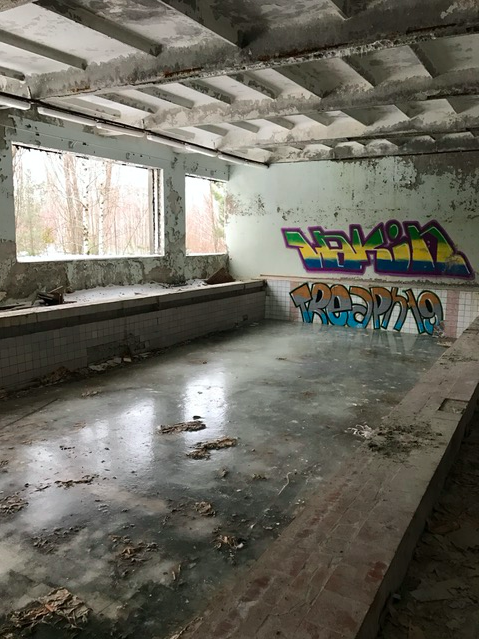
Indoor swimming pool in Pripyat
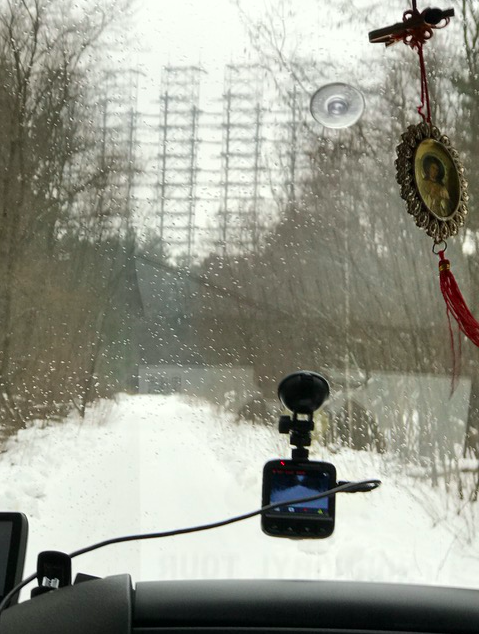
The Duga Radar towering above the trees
Out at the Duga Radar…
A massive metal structure emerges from the skinny brown trees: the Duga radar. I’ve never sailed across the Atlantic, but perhaps the Duga Radar feels like the Statue of Liberty shooting out of the sea after thousands of miles of flat ocean. It might not evoke the same emotion of reaching the “promised land,” but it’s a stoic creation of engineering genius, power, and awesomeness that commands attention and respect. Humans have no option but to feel insignificant around the Duga.

The Duga Radar was part of the over-the-horizon Soviet anti-ballistic missile network set up to detect American missiles. The radar was nicknamed the “Russian Woodpecker” because it made the sound of a woodpecker that annoyed people from around the globe who came anywhere near its frequency.
The Russian Woodpecker operated in secrecy and was placed tactfully near the Chernobyl reactors. Its lifespan was short, and it was shut down after the Chernobyl disaster. Today, this large metal structure is just a hunk of impressiveness worth millions of dollars in scrap metal.
Lesson learned? Don’t build expensive things near nuclear reactors.

The grayness started to get grayer. This didn’t mean more clouds were rolling in; it meant the obscured ball of fire—also known as the sun—was moving below the horizon towards a warmer destination. We passed a couple of checkpoints with some large guards in uniforms that gave us the proper check of permits and head nods. Eventually, we exited the Chernobyl Exclusion Zone—an odd sliver of land that the world knows of, but is mostly unknown.
Chernobyl… a place where so many followed the dream of a better life and suffered the ultimate consequence. A place that is now being built up again so it can be shut down for good. A place where the current economy functions and thrives on disaster. A place of heroes, of nuclear failure, of horrific suffering… a surreal land that holds onto the dark stories of utopia, sadness, and money.
If you’re interested in more about Chernobyl, I found this website to have a ton of excellent info: http://chernobylgallery.com/
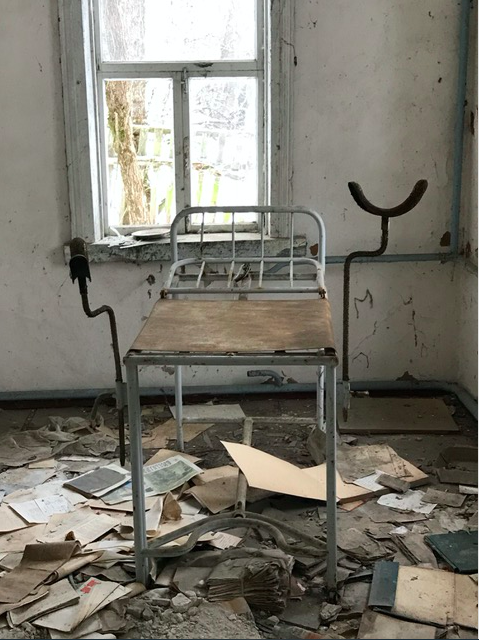
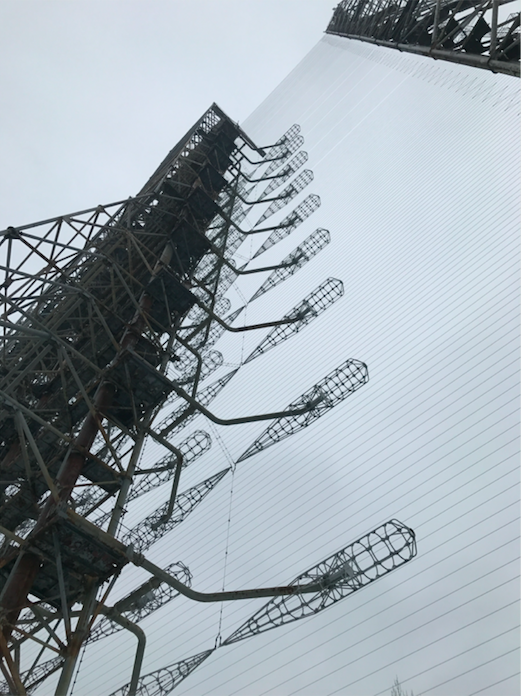

Pripyat
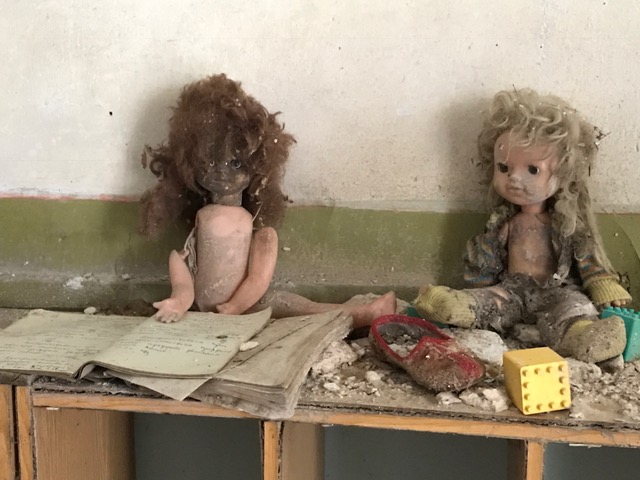

Former cultural center
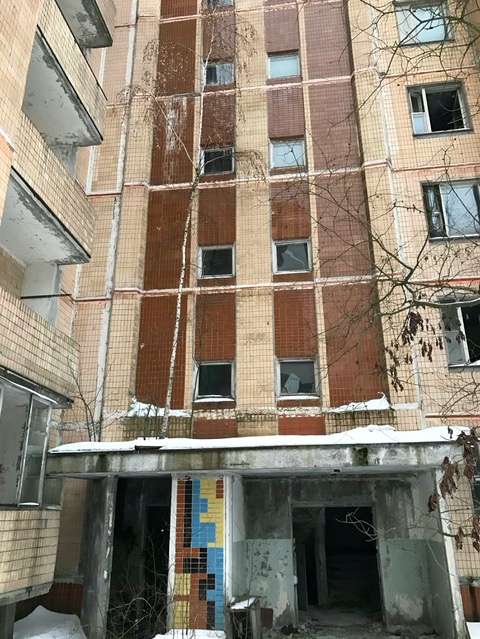
Nature taking back its turf

Boxing ring


If you’re interested in more content from UKRAINE and the WORLD visit these links below:
